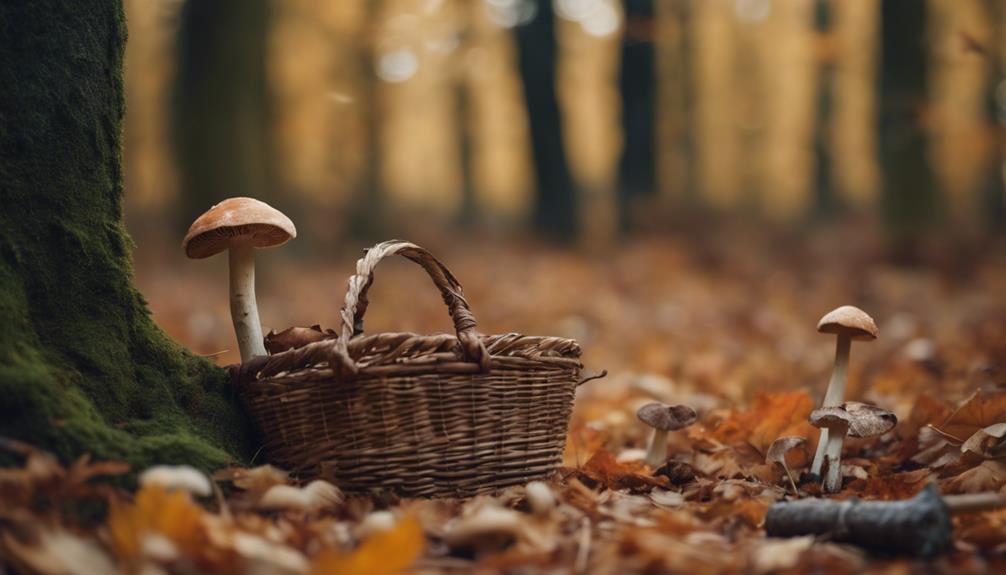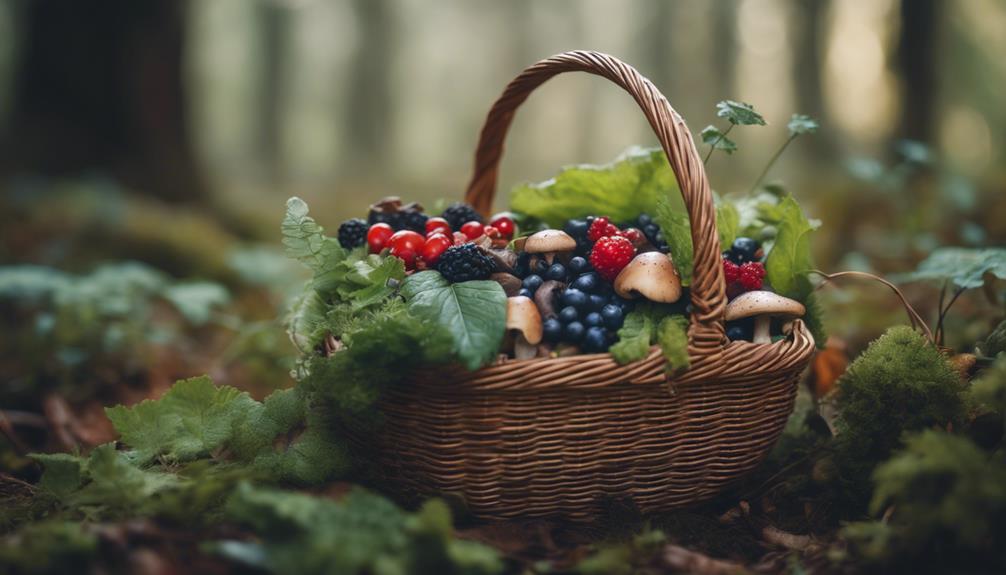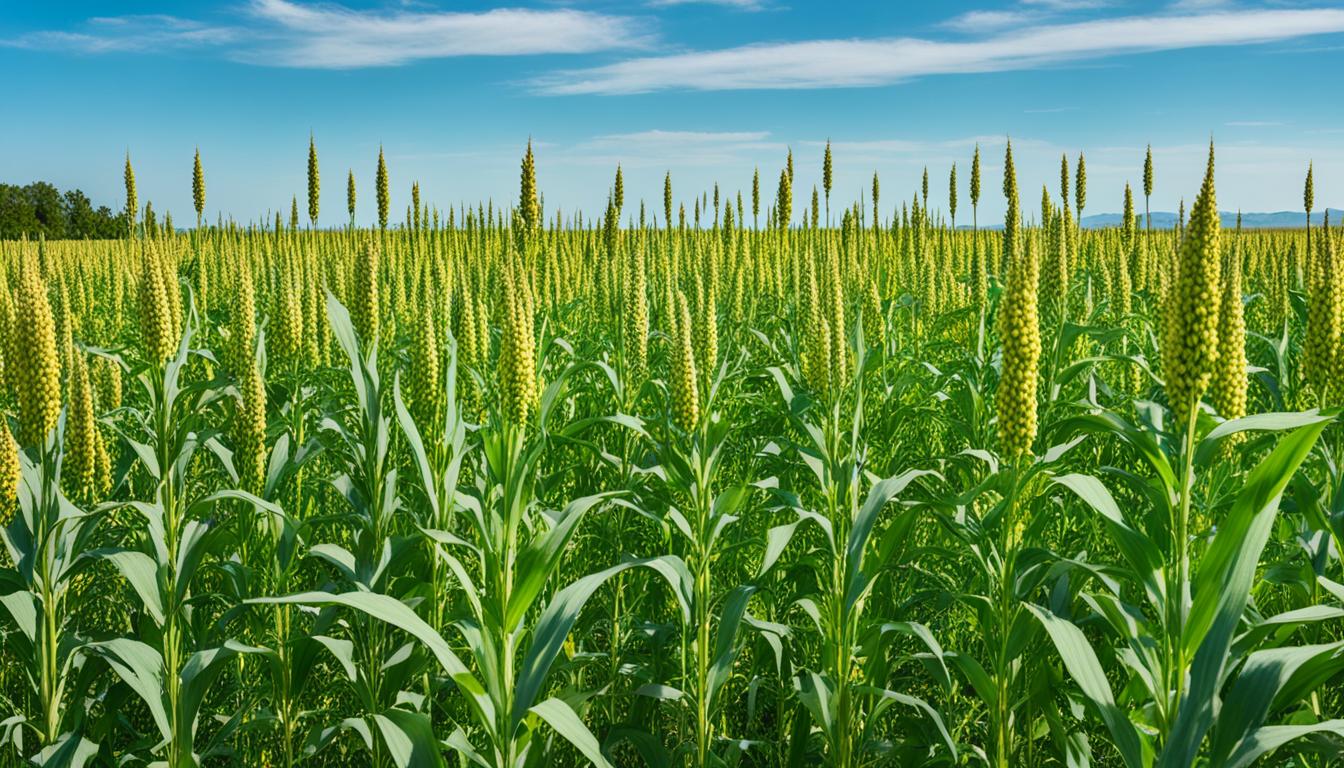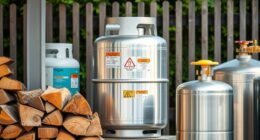You can turn foraging for mushrooms into a profitable venture by identifying and harvesting valuable species like Bears Tooth, also known as Lions Mane, which is sought after by chefs for its taste and texture. Proper identification is essential to avoid toxic species. Focus on building a loyal customer base by establishing relationships with local restaurants and chefs, and navigate the market with strategic pricing and marketing. With careful harvesting techniques and attention to detail, you can create a lucrative business. As you explore the world of mushroom foraging, you'll uncover more secrets to maximizing your profits.
Key Takeaways
- High-demand species like Bears Tooth mushrooms can fetch top dollar from chefs and restaurants, making foraging a profitable venture.
- Proper identification is crucial to avoid toxic species and ensure a safe, marketable product.
- Focusing on quality harvesting techniques and handling delicate species with care can increase market appeal and profitability.
- Building a loyal customer base through relationships with local chefs and restaurants can provide steady demand and income.
- Accurate identification, proper packaging, and highlighting unique selling points can help foragers command a premium price for their products.
Valuable Species to Forage
When it comes to foraging for profit, you'll want to keep an eye out for species that fetch a high price in the market, like the coveted Bears Tooth mushroom. Also known as Lions Mane, this edible plant is highly valued by chefs for its unique taste and texture.
According to Wildman Steve Brill, a renowned foraging expert, Bears Tooth mushrooms are a prime choice for those seeking to profit from their foraging efforts. Their distinct appearance and flavor make them a sought-after species, and they can fetch a high price in the market due to their uniqueness and culinary appeal.
As a forager, you can earn significant income by collecting and selling Bears Tooth mushrooms to restaurants or specialty food stores. By knowing what to look for and where to find them, you can capitalize on the demand for this prized species.
Identifying Mushrooms for Profit

As you venture into the world of profitable mushroom foraging, identifying prime condition edible varieties like Bears Tooth mushrooms becomes essential to cashing in on the high demand. You'll be thrilled to know that chefs in New York and elsewhere are willing to pay top dollar for high-quality wild edible mushrooms. We're talking up to $25 per pound for the best ones!
But here's the thing: proper identification is vital. You don't want to mistake a poisonous mushroom for a tasty one. There are over 250 known toxic species out there, and you don't want to become a statistic.
Bears Tooth mushrooms, also known as Sweet Tooth Hedgehog or Lions Mane, can be tricky to identify due to variations in color and texture based on growth conditions. But with practice and patience, you'll become a pro at spotting the good stuff.
Mushroom Growth Conditions

As you venture out to forage for mushrooms, it's crucial to understand the ideal habitats and prime climate zones that support their growth.
You'll want to focus on areas with specific conditions that foster healthy mushroom development, such as moist environments with sufficient shade and humidity.
Ideal Habitats
You'll typically find Bears Tooth mushrooms thriving in specific habitats, such as old-growth forests dominated by hardwood trees. It's a good thing you know where to look! Old-growth forests provide the perfect environment for these mushrooms to grow, with decaying logs, stumps, or fallen branches in shaded areas being prime spots to search.
These mushrooms prefer cooler, moist environments with adequate humidity levels for best growth. You'll also find them at higher elevations in mountainous regions with suitable tree species. Understanding the ideal habitats and growth conditions is essential for successful foraging of Bears Tooth mushrooms.
Optimal Climate Zones
Different mushroom species thrive in specific climate zones, and understanding these essential conditions is important for successful foraging and cultivation. You'll find that some mushrooms prefer cooler temperatures, while others thrive in warmer regions. Ideal mushroom growth conditions include consistent moisture levels, proper air circulation, and specific soil types depending on the mushroom variety.
For instance, morel mushrooms require specific temperature ranges and soil pH levels to grow successfully. Factors like humidity, sunlight exposure, and seasonal changes play a significant role in determining the growth and abundance of mushrooms in different climate zones.
Understanding the best climate zones for specific mushroom species is important for successful foraging and cultivation. By knowing the ideal conditions for your target species, you can increase your chances of finding or growing them. Take the time to research the climate zones that support the mushrooms you're after, and you'll be well on your way to a successful foraging or cultivation experience.
Harvesting Techniques for Quality

When getting ready to harvest mushrooms, it's crucial to develop techniques that prioritize quality.
You'll need to learn how to handle delicate species with care and master proper cutting techniques to avoid damaging the mushrooms.
Handling Delicate Species
When foraging for delicate species like Bears Tooth, cut them at the base with a sharp knife to preserve their quality and minimize disturbance to the surrounding area. This essential handling is important to avoid bruising or deterioration in quality during harvesting. You'll want to use a sharp knife to carefully cut the mushroom, ensuring a clean cut and preventing damage to the surrounding area.
Here are some key tips to keep in mind when handling delicate species:
| Species | Harvesting Technique | Quality Considerations |
|---|---|---|
| Bears Tooth | Cut at base with sharp knife | Handle gently to avoid bruising |
| Delicate species | Twist or cut gently | Avoid damaging the mushroom |
| Fragile mushrooms | Cut or twist carefully | Preserve quality for higher prices |
| Quality mushrooms | Harvest with care | Maintain appeal for chefs and markets |
Proper Cutting Techniques
To guarantee you're harvesting mushrooms at their best, use a sharp knife to make clean cuts at the base of the stem, preserving the delicate mycelium network and promoting healthy regrowth. This technique secures that the fungus remains intact, allowing it to continue producing mushrooms.
When harvesting, avoid yanking or pulling mushrooms, as this can harm the mycelium network and reduce future harvests. Instead, focus on making precise cuts that allow the mushroom to regenerate.
Here are some key takeaways for proper cutting techniques:
- Use a sharp knife: A sharp knife ensures a clean cut, minimizing damage to the mycelium network.
- Cut at the base of the stem: This helps preserve the delicate mycelium network and promotes healthy regrowth.
- Avoid pulling or yanking: Gentle cutting is essential to prevent damage to the fungus and secure continued harvesting.
Building a Customer Base

You'll need to cultivate a loyal customer base to guarantee a steady demand for your foraged mushrooms, and establishing relationships with local restaurants and chefs is a great place to start. Reach out to them directly, and offer samples of your freshest finds. This will give them a taste of what you have to offer and help you build a network of potential buyers.
In addition to connecting with local eateries, consider attending farmers markets or setting up a booth to showcase your mushroom harvest. This will allow you to connect with potential customers directly, answer their questions, and build trust in your product.
To expand your reach, utilize social media platforms to promote your foraged mushrooms and attract new customers. Share high-quality photos, recipes, and behind-the-scenes glimpses into your foraging adventures.
You can also offer mushroom foraging classes or workshops, educating others while generating additional income. Finally, consider creating a website or online store to reach a wider audience and sell your mushrooms directly.
Pricing and Marketing Strategies

Set your prices competitively by researching what other foragers in your area are charging for similar varieties, ensuring you're not underselling or overselling your prized finds. You want to make a profit, but you also want to stay competitive in the market.
When it comes to marketing, you'll want to highlight the unique qualities of your mushrooms.
Here are three key strategies to take into account:
- Emphasize freshness: Chefs and restaurants often prioritize freshness, so be sure to mention how quickly you can deliver your mushrooms after harvesting.
- Highlight variety: With so many types of mushrooms out there, focus on the rare or hard-to-find species you've foraged to attract chefs looking for something unique.
- Stress the value of local sourcing: As consumers become more environmentally conscious, emphasize the benefits of buying locally sourced mushrooms that support the local ecosystem.
Regulations and Safety Considerations

As you venture into the world of mushroom foraging, it's important to acknowledge the risks involved and take necessary precautions to guarantee your safety and the safety of those consuming your finds.
With over 250 poisonous mushroom species, it's imperative to seek professional guidance to differentiate between edible and toxic varieties. Don't rely on guesswork or assumptions, as even a small mistake can be fatal. Less than 100 out of thousands of mushroom species are edible, underscoring the need for expert knowledge in identification.
When foraging, adhere to safety measures to prevent accidental consumption of poisonous mushrooms. Avoid consuming or sharing mushrooms without accurate identification, as this can lead to potential health risks associated with toxic varieties. Remember, it's always better to err on the side of caution when dealing with wild mushrooms.
Frequently Asked Questions
How Much Money Do Mushroom Foragers Make?
You're wondering how much money mushroom foragers make? Well, you can rake in $200 an hour or $2,000 to $3,000 a year, and even score $100 for a single five-pound catch, making it a lucrative venture.
Can You Make a Living Foraging Mushrooms?
You can make a living foraging mushrooms, and some people do, earning a sustainable income from it. With careful planning, you can turn your mushroom hunting into a profitable venture, generating a steady income.
What Are the Rules for Mushroom Foraging?
'Did you know that 70% of mushroom species remain undiscovered? When foraging for mushrooms, you'll need to obtain permission from landowners, check local regulations, and respect nature to guarantee sustainable harvesting.'
How to Start a Foraging Business?
You'll start a foraging business by researching local demand, building relationships with chefs and markets, and investing in equipment; then, consider permits, insurance, and networking with other foragers to guarantee success. Additionally, diversify your offerings by learning the seasonal availability of different plants and fungi, ensuring a constant flow of unique ingredients. Marketing yourself through social media and local food communities can also boost visibility, showing potential customers how to make money foraging through thoughtful and sustainable practices. Finally, always adhere to ethical harvesting techniques to maintain a healthy ecosystem and build a respectable reputation. By educating yourself on sustainable practices and responsible harvesting, you can ensure that your business contributes positively to the environment and community. Offering workshops or guided foraging tours is another creative way to make money from foraging while sharing your knowledge with others. Ultimately, a solid commitment to quality and ethical standards will help build trust and long-term partnerships with clients.
Conclusion
As you venture into the world of mushroom foraging for profit, remember that it's a treasure hunt that requires patience, persistence, and knowledge. Just as a skilled fisherman knows the best spots to cast their line, a successful mushroom forager knows the prime conditions for valuable species to grow.
With the right techniques and marketing strategies, you can reel in a profitable catch. In 2019, the global mushroom market was valued at $53.7 billion, and it's expected to keep growing. Seize the opportunity to tap into this lucrative market and turn your passion into a profitable business.










